Long associated with Halloween, magic, evil spirits, and sucking blood, bats have been unfairly treated in human culture. These incredible creatures are the only mammal capable of full flight; in reality, they’re very peaceful animals.
Fruit bats or flying foxes are large bats that only eat fruit and nectar. There are more than 180 different species, and they live across a large area of the world. These critters are super-important to the ecosystem and like to live in large colonies where they can “hang out” with their families!
Interested to know more about these furry, flying fruit-eaters? Read on to find out everything you wish to know about fruit bats and how we can protect them.
Taxonomy and Evolution
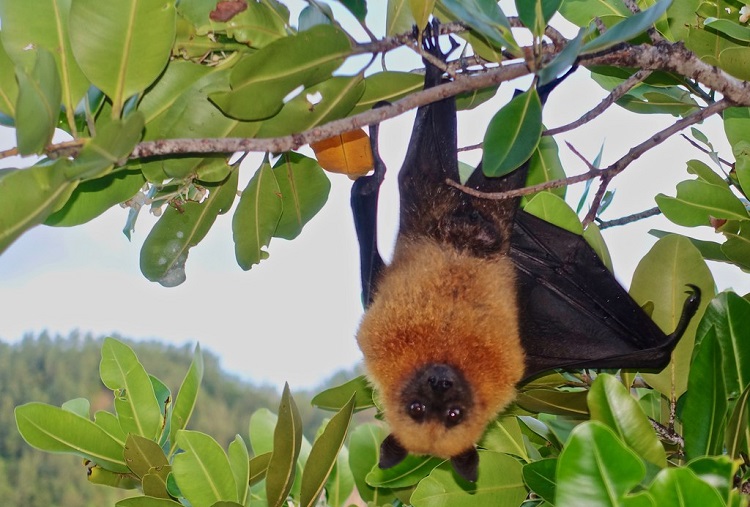
Bats are usually divided into two main taxonomic classifications: “Megachiroptera” or megabats and “Microchiroptera” or microbats.
Confusingly, some megabats are small, and some microbats are big. Perhaps they could have come up with better category names.
Fruit bats are in the Megachiroptera classification. They are sometimes also called “flying foxes.”
It’s thought that the first fruit bat appeared around 35 million years ago. They are likely to have evolved from small insectivores before gaining their wings.
Old World Fruit Bats
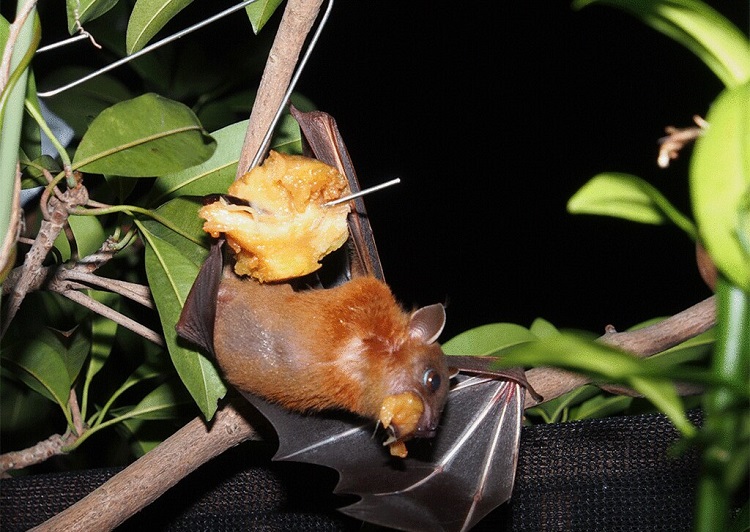
“Pteropodidae” is the scientific name for the Old World Fruit Bat-family.
Sounds weird, right? Well, it’s actually derived from a mixture of Latin words that means “wing-foot,” which makes perfect sense when you think about it!
The family Pteropodidae is the only family in the Megachiroptera classification. It includes over 180 different species of fruit bat that live across Australia, Africa, and South-East Asia.
They are called Old World Fruit Bats because the “old world” historically referred to Asia, Africa, and Southern Europe.
Where Do Fruit Bats Live?
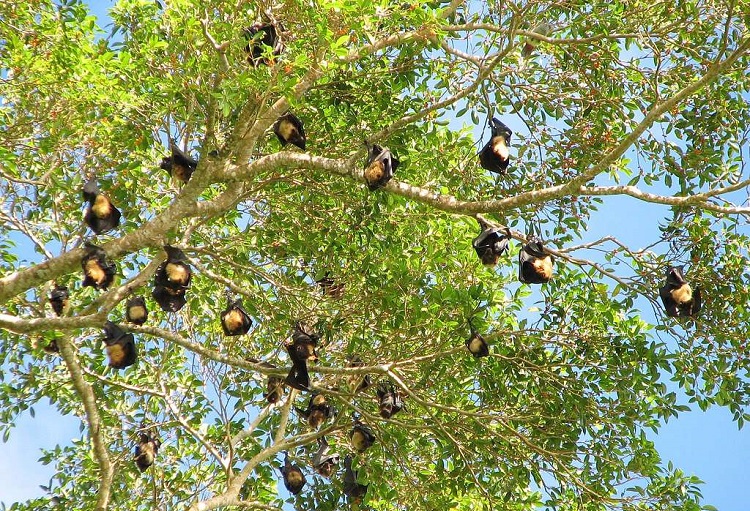
Fruit bats like to live in tropical areas with warm climates and trees. They are found in some savanna regions, as well as thick rainforests.
The majority of Fruit bats are found in Asia and subtropical Africa. However, they also live in Australia and on islands in the Indian and Pacific Oceans.
Types of Fruit Bats
The Fruit bat family comprises over 180 species, divided into 41 genera. The biggest genera contains 59 species. This genera is called “Pteropus”.
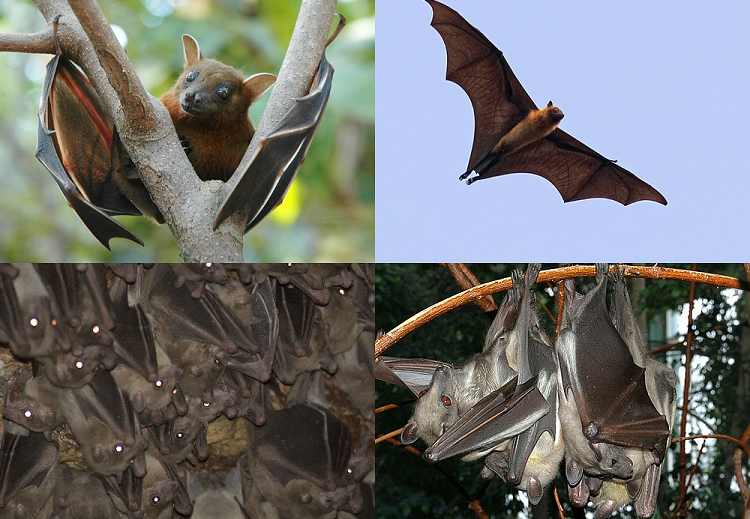
Common species include the following:
- Indian Flying Fox
- Egyptian Fruit Bat
- Long-Tongued Fruit Bat
- Tube-Nosed Fruit Bats
- Hammer-Headed Bat
- Rodrigues Flying Fox
- Mariana Fruit Bat
- Australian Little Red Flying Fox
Appearance of the Fruit Bat
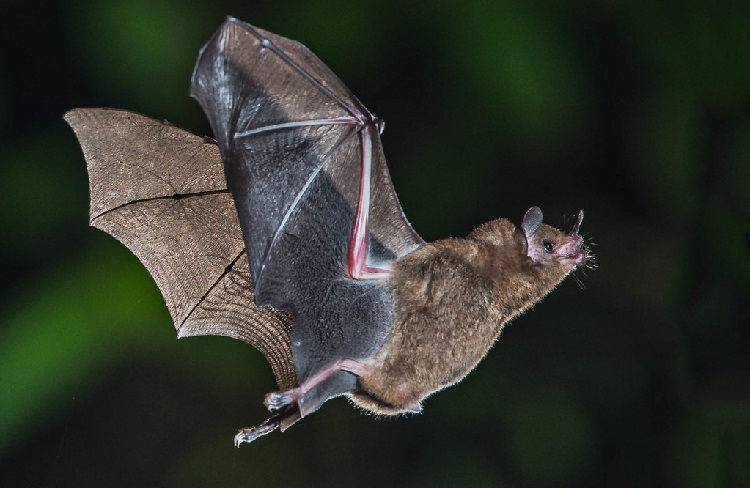
Fruit bats have a rather adorable appearance. They have cute fox-like faces with furry bodies and wings. Bats are the only mammal that can achieve full flight, which makes them pretty amazing!
They have a long fur coat and wings that are simply flaps of hairless, extended skin with a hook claw on the tip. Their eyes are large, and they have simple ears that stand erect like a dog. They are usually dark in color, although some species, such as the straw-colored Fruit bat, have a light coat.
Many species have a dog-like snout and two upper and lower canine teeth, which they use to chew into tasty fruit. In addition, they have two small rear legs and claws that help them grip onto branches.
Fruit bats are also the largest of all bat families in the world. Some species are smaller than others, but the flying fox has an incredible wingspan of 5.5 feet. As a general rule, the larger their body size, the longer their wingspan will be. This enables them to balance their weight and maneuver in flight.
Internal Systems
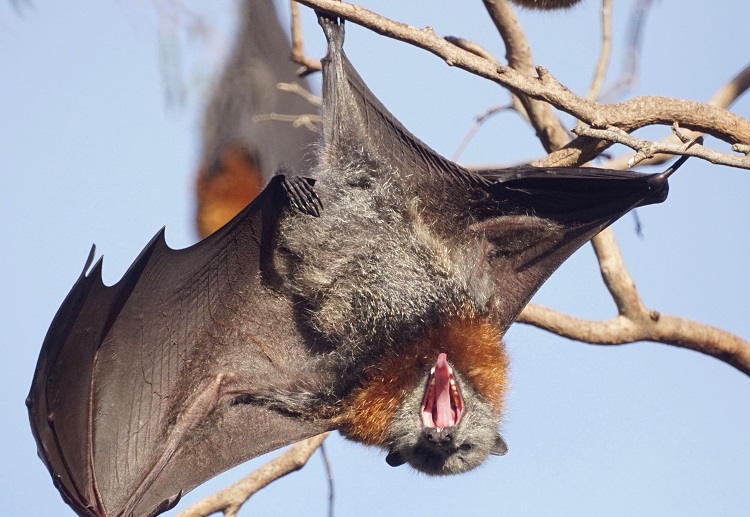
Fruit bats may be cute, but they have really impressive internal systems too! Their heart and circulation system are super efficient to make sure they get enough oxygen while flying.
Flying requires a lot of energy, so their heart rate can get incredibly fast. For example, Egyptian Fruit Bats have recorded a heart rate of 728 beats per minute!
They also have very efficient digestive systems that take a maximum of half an hour to process their diet. Their intestines are specially designed to absorb nutrients, so they quickly get energy from their meals.
Biology and Ecology
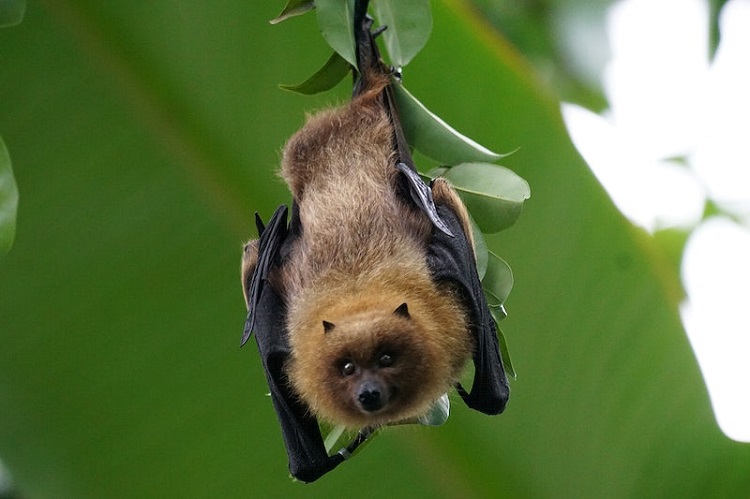
Fruit bats have the best eyesight of any species of bat. They use their amazing vision alongside a great sense of smell to sniff out delicious fruit. It also helps them to detect predators and keep themselves safe.
One of the most interesting facts about fruit bats is that their long tongue doesn’t stay in their mouth. Instead, it rolls back up inside and around their rib cage when not used! They use their sharp canine teeth to break the fruit’s skin before lapping it up with their tongue.
While all Fruit bats have wings, the size of the wings can vary depending on where they live. This helps them to fly through dense tree covers or cope with strong winds in their home environment.
Fruit Bat Behavior
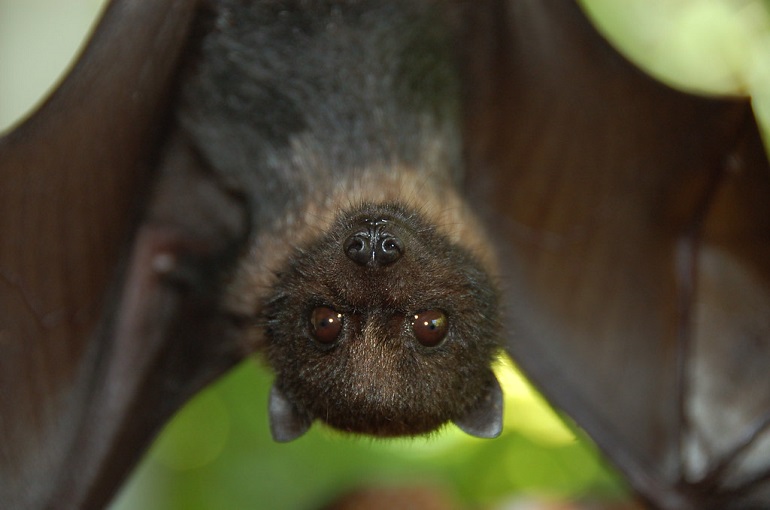
Bats have always been associated with darkness, and it’s true that they prefer to be active at night. They usually head out to feed when the sun goes down and come back to roost as the sun comes up. It’s believed that they do this to avoid predators.
As frugivores, Fruit bats use their incredible vision and sense of smell to find food and navigate the world around them. This makes them unusual, as most bats use echolocation to seek out a meal. Some fruit bats can make a clicking sound with their tongue, but it’s not the same as echolocation.
They love to hang out in large groups, and there are few solitary species. As they are very sociable creatures, it’s common for them to live in a colony of as many as 200,000 bats if there’s plenty of food available.
Some Fruit bat species migrate long distances, but the majority will live out their lives in close proximity to their roosting site. As you can imagine, Fruit bat roosts are very noisy! With thousands of bats making trills, squeaks, and squawks, it’s surprising they get any sleep at all.
Interestingly, at least one species, the Egyptian Fruit Bat, is believed to learn its vocalizations by mimicking others in its colony, almost like learning a local dialect!
Role in the Ecosystem
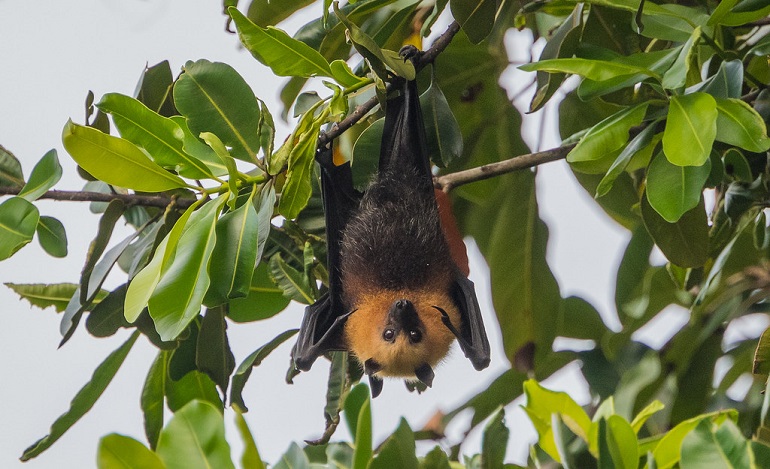
Fruit bats don’t just fly around, making noise and eating fruit – they play an important role in the ecosystem, too.
Because they scatter seeds as they forage, they are crucial to the existence of many trees and plants. This makes them very effective seed distributors. They often drop large seeds after eating and will release small seeds in their poop while flying or roosting.
They will also pick up sticky pollen on their fur and spread it around to pollinate other plants and flowers. They are amazing gardeners without even knowing!
They are so important to the ecosystem that some plants have evolved alongside bat colonies and now rely on their existence to survive.
Range and Habitat
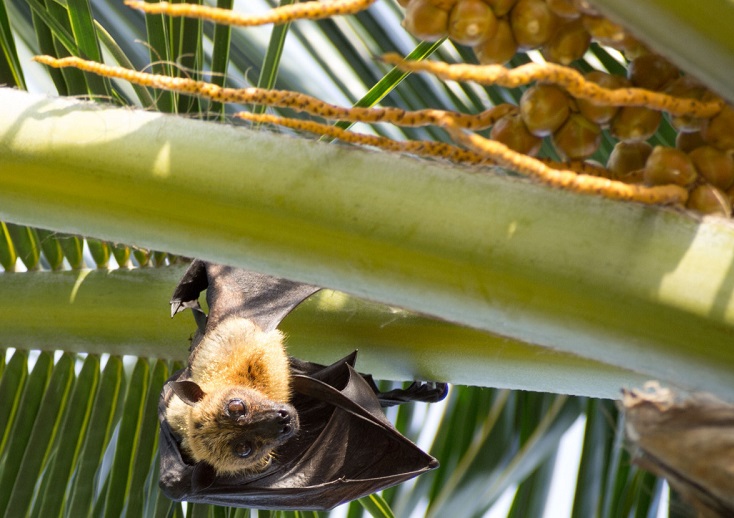
Most Fruit bat species inhabit the savannas and tropical and subtropical areas from the Eastern Mediterranean to Australia. There are also a few species that live in South and Central America.
Fruit-eating bats usually roost in trees, although some will also inhabit caves, bushes, and in some cases, buildings. A colony will often stay in just one roost site if they are happy, fed, and undisturbed. After all, why move house if you don’t have to?
Fruit Bat Reproduction and Life Cycle
Not much is known about Fruit bat reproduction, especially because this behavior can differ widely between individual species. However, it’s hypothesized that lots of species have multiple partners, while some will stick with just one partner.
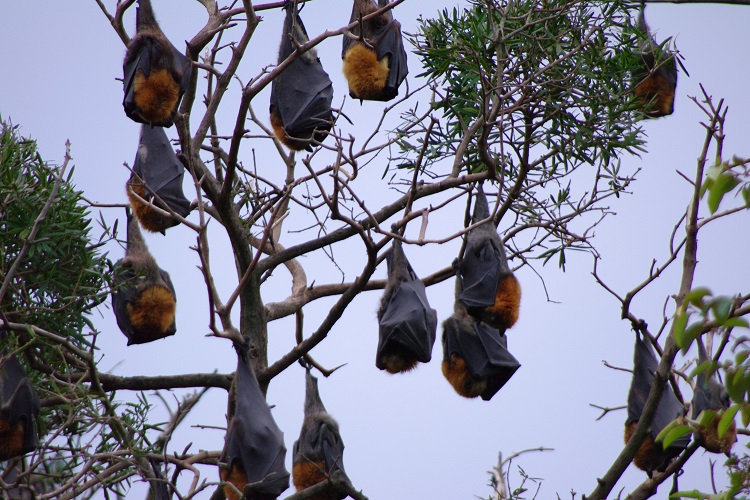
Promiscuous species will engage in polygyny. This means one male will have a large group of female bats all to himself. Other male bats will wait on the sidelines and try to tempt some of the ladies away by seductively flapping their wings and making special noises!
The majority of individuals will only mate once a year, although some species may have two mating seasons depending on the climate. When the females get pregnant, they may leave in a group with other bats to create a nursery colony and help each other take care of the young.
Mothers are pregnant for between four to six months. However, mummy bats have an amazing ability to postpone the development of their baby if the conditions are not favorable. If she is happy with the environment and the amount of food available, she will give birth and start to lactate. Mothers usually only have one offspring, called a “pup.”
The mummy bat takes care of the pup without any help from the father. The pup will stay with its mother for the first four months, but it takes young bats around 2-years before they reach sexual maturity and can mate themselves.
If they survive into adulthood, they can live up to 30 years.
Threats to Fruit Bats
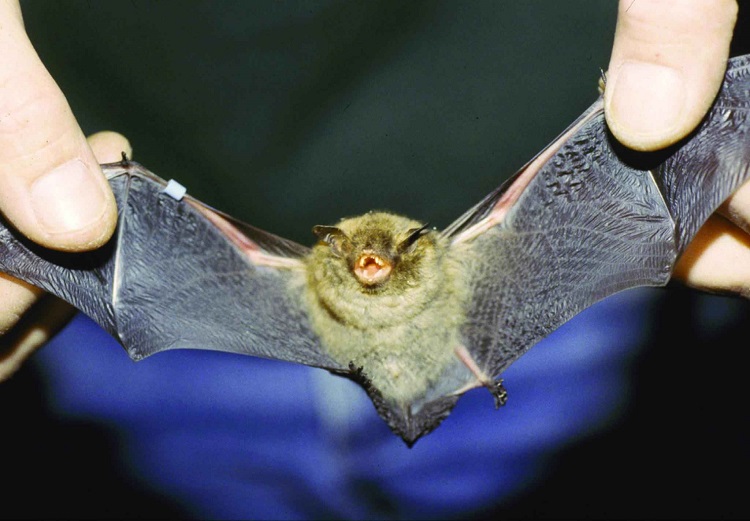
Unfortunately, Fruit bats face many threats. They are preyed upon by lizards, snakes, birds of prey, and other carnivorous mammals, including people. In some countries, they are hunted for their meat or use in traditional medicine.
Aside from the risk posed by natural predators, they also suffer the danger of large-scale habitat destruction, which destroys their roosts and ability to find. Human activity is often responsible for this through climate changes and agriculture.
Some people will shoot or poison them to prevent them from eating their crops. Humans may also attempt to shield their fruit production trees using netting. Unfortunately, they often get entangled in the nets, become trapped, and die.
They are also vulnerable to electrocution from power lines or electrified grids that are placed around fruit crops to keep them out.
Climate change threatens Fruit bats by altering their environment. Heat waves can kill thousands of individuals, as they’re unable to regulate their body temperature and cool down.
Babies and females tend to suffer a higher mortality rate in extreme temperatures. When young pups and sexually mature females are killed, this further affects the population growth rate.
Several species of Fruit bat live on just one island. As our changing climate leads to more frequent and powerful storms, it threatens their existence. The increase in global temperatures has resulted in changes to typhoon patterns, which can hit their island homes and cause habitat loss.
Intense winds tear leaves and fruit from the trees, so they cannot hide amongst the foliage. They become more visible to humans who wish to hunt them, and they cannot eat safely amongst the branches.
Instead, they must come to the ground to forage for fallen fruits and other food sources, where other animals often attack them.
Habitat destruction due to changing sea levels is also a serious issue. Many live in low-lying areas, which are at risk of flooding as the water rises.
Food of Fruit Bats
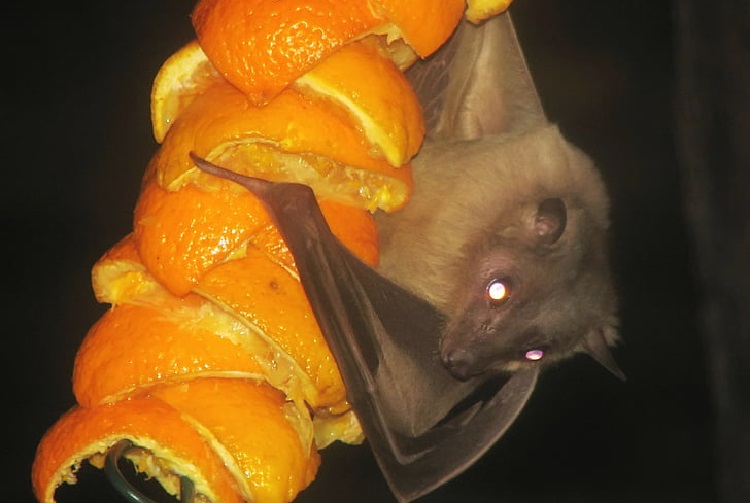
These cute mammals are completely reliant on the fruit of flowering plants and fruit trees.
The majority of their time is spent in large groups, searching for nectar, tropical fruits, and pollen to feed. Often, a Fruit bat will take a piece of fruit and squeeze out the juice before eating the flesh with their sharp teeth, leaving the seed behind.
Just like people, most species tend to have their favorite foods. Depending on what is available in their habitat, they will seek out a particular type of flower, nectar, or fruit that suits their taste.
Some Fruit bats are so connected with their environment they have adapted to exclusively eat only certain local flora.
Relationship to Humans
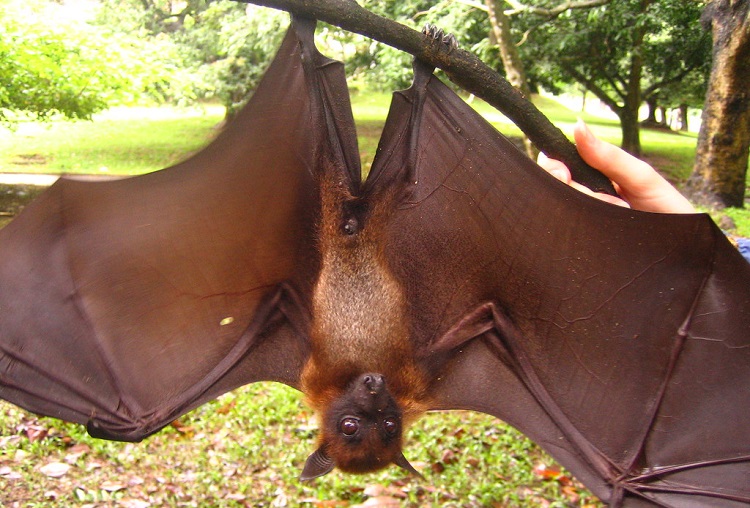
Bats have always had a place in human culture and mythology, but their relationship with people is a difficult one.
Fruit bats are hunted for their meat in Asia, Central and South America, Africa, Oceania, and many Atlantic Ocean, Indian Ocean, and Pacific Ocean islands. Some cultures also believe they have supernatural properties and use their body parts for magic and rituals.
As a result, conservationists say one in ten species is threatened by hunting. However, large fruit bats are more commonly targeted by people. In fact, at least half of all Pteropus species are hunted for human consumption, devastatingly impacting their population numbers.
Bats are also hunted for trade in souvenirs and traditional medicine. For example, the people of the Himalayas use oils infused with bat derivatives as a supposed cure for diseases. Many countries in Asia and Africa also use bat products for medicinal purposes.
Fruit Bat Conservation
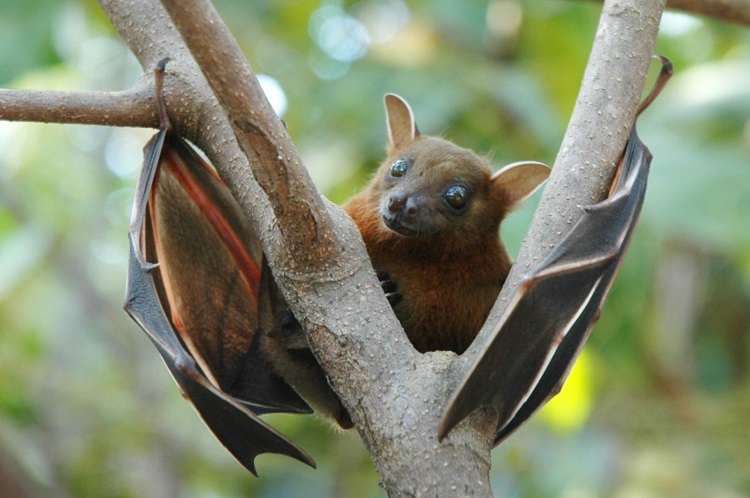
It’s impossible to quantify how many of these mammals exist, but due to their wide distribution, they should be in substantial numbers.
The International Union for Conservation of Nature (IUCN) Red List has deemed almost 50% of species as “least concern.” However, 25% of species are classified as threatened species, and many, such as the Rodrigues Fruit Bat, are listed as critically endangered.
The international wildlife trade is regulated by the Convention on International Trade in Endangered Species of Wild Fauna and Flora or “CITES.”
CITES prohibits particular endangered species of bats from being traded across the world. Unfortunately, it is very difficult to monitor, and simply because an international agreement may be in force, it does not mean it will be adhered to by illegal actors.
The best way to protect Fruit bats from the threat of being hunted and traded is to improve policies and enforcement. Creating national laws in countries with the worst bat trade may help save more bats from this fate.
If local communities have sustainable guidelines to follow, it could be possible to balance human needs with bat conservation. Educating people about bats and creating an alternative way for them to make money may stop commercial hunting altogether.
The trade-in bats can also spread diseases between other species and people. They often carry many different types of viruses, which are harmless to the bat but dangerous to humans. According to the Environmental Law Institute, a potential solution is to create anti-disease transmission laws to prevent trade in bats.
The overhunting and trading of Fruit bats are not only detrimental to the species’ survival but also damaging to human health. Although tackling this issue is challenging, hopefully, humanity can come together and find a solution to protect these special creatures in the future.
What You Can Do to Help
If you would like to support fruit bats, you can join a charity and take part in conservation projects. There are many organizations across the world that are working to raise awareness and help these amazing creatures thrive.
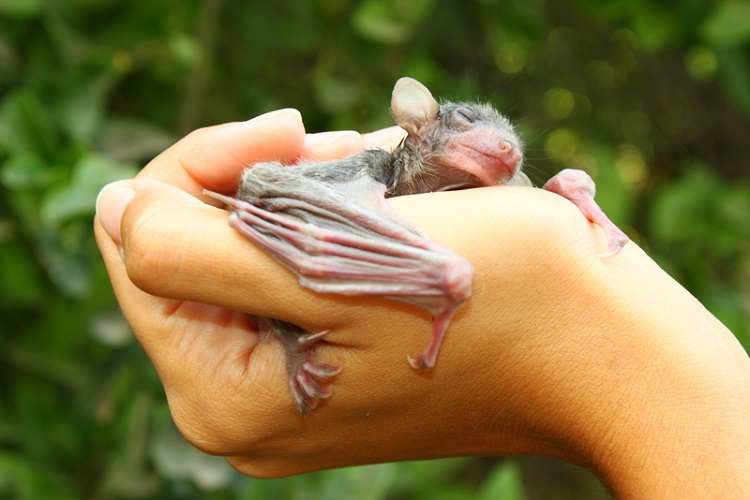
Get in touch with the below organizations to see what you can do.
- Bat Conservation International
- Bat Conservation Trust
- Bat World Sanctuary
- Friends of The Earth
Besides supporting charities, you can change your own lifestyle to help Fruit bats.
When buying natural products, ensure they are sourced from sustainable forests and don’t contain palm oil. This will help to reduce deforestation and preserve the home of fruit bats.
FAQ’s
Here are some frequently asked questions about Fruit bats.
Are Fruit Bats Harmful?
Fruit bats harbor dangerous pathogens that can be transmitted to other organisms and people. Outbreaks of Ebola, Mers, and Sars viruses are thought to have originated from human interaction with these creatures.
A study of the African Straw-Coloured Fruit Bat found that 42% of individuals harbored deadly Henipa viruses, which can be transferred to people.
So long as people make contact with bats by hunting them, eating their meat, and destroying their habitat, it’s likely that disease outbreaks will continue.
Do Fruit Bats Bite Humans?
Fruit bats do not suck blood and are not aggressive to people. Instead, they are peaceful, shy animals that just want to forage for food and hang out with their colony!
However, if they’re injured or threatened by humans, they’re capable of biting to defend themselves. And who can blame them?
Is a Fruit Bat Friendly?
Fruit bats may look adorable and cuddly, but they are not our friends. You should never approach a fruit bat or try to touch it as it may bite and pass on diseases. They are wild animals and should be respected as such.
Conclusion
Fruit bats are truly amazing creatures. With their large eyes, huge wingspans, and furry, fox-like faces, they look rather cute, too!
Super sociable, these mammals can live in huge colonies of up to 200,000 individuals. The females will create little nurseries to help each other take care of their young, and they are even smart enough to learn new dialects from their companions.
They also have incredible eyesight and specialized biology that allows them to absorb energy quickly and transport oxygen rapidly as they fly. Pretty cool, right?
Unfortunately, Fruit bats are under threat from human activities. They are hunted extensively, targeted by farmers, and habitat destruction jeopardizes their future.
If you’d like to help save these awesome flying foxes, check out the organization links in this article and spread the word!












